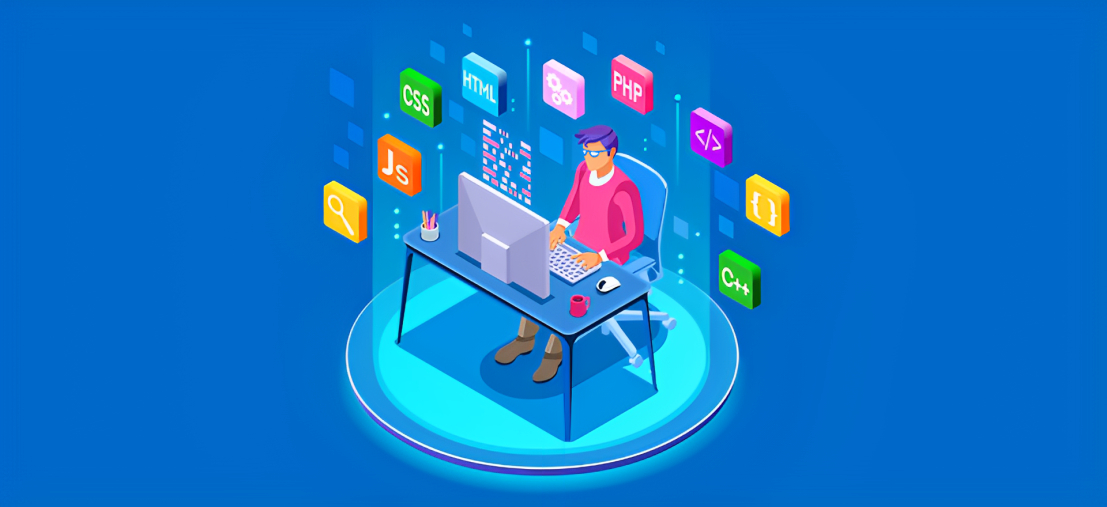The Best Practices and Tools for Web and App Development
In today’s digital age, web, and app development have become crucial for businesses and individuals alike. Creating a compelling online presence requires not only a solid understanding of coding languages and frameworks but also adherence to industry best practices. Additionally, utilizing the right tools can significantly streamline the development process and improve overall efficiency. In this article, we will explore the best practices and tools for web and app development, equipping you with the knowledge to create high-quality digital experiences that stand out from the competition.

Planning and Documentation
Before diving into the development process, it is essential to thoroughly plan and document your project. This includes defining the scope, objectives, and target audience, as well as creating wireframes and mockups to visualize the final product. Effective planning and documentation helps ensure that your development team stays aligned and reduces the likelihood of misunderstandings or rework later on.
Responsive Design
With the increasing use of mobile devices, it is crucial to prioritize responsive design during web and app development. Responsive design ensures that your digital assets adapt seamlessly to different screen sizes and resolutions. By utilizing fluid grids, flexible images, and CSS media queries, you can create user-friendly experiences across a range of devices, improving accessibility and user engagement.
User-Centric Approach
A user-centric approach should be at the core of any web and app development project. Understanding your target audience’s needs and preferences is vital for creating intuitive and enjoyable experiences. Conducting user research, gathering feedback, and conducting usability testing can provide valuable insights to inform your design and development decisions.
HTML5 and CSS3
HTML5 and CSS3 are fundamental technologies for web development, providing enhanced functionality and aesthetics. HTML5 introduces new semantic elements, audio and video support, offline storage, and improved forms, among other features. CSS3, on the other hand, offers advanced styling options, including animations, gradients, shadows, and transitions. By utilizing these technologies effectively, you can create visually appealing and interactive web experiences.
JavaScript Frameworks
JavaScript frameworks, such as React, Angular, and Vue.js, have gained immense popularity in recent years. These frameworks provide powerful tools and libraries that simplify complex development tasks and enhance the user interface. By leveraging JavaScript frameworks, developers can create dynamic and responsive web applications with greater ease and efficiency.
Version Control Systems
Version control systems, such as Git, are indispensable tools for web and app development. These systems enable developers to track changes, collaborate effectively, and revert to previous versions if necessary. Version control also facilitates seamless integration with deployment pipelines and continuous integration/continuous deployment (CI/CD) workflows, ensuring smooth development and release cycles.
Performance Optimization
Optimizing the performance of your web or app is crucial for delivering a smooth and fast user experience. Slow-loading pages and unresponsive applications can frustrate users and drive them away. Techniques such as code minification, image optimization, caching, and lazy loading can significantly improve performance and reduce loading times.
Security Measures
Web and app security should never be overlooked during the development process. Implementing robust security measures, such as secure authentication, encrypted communication (HTTPS), and input validation, helps protect user data and prevents potential vulnerabilities. Regular security audits and updates are necessary to stay ahead of evolving threats and ensure a secure digital environment.
Testing and Debugging
Thorough testing and debugging are essential to identify and fix issues before launching your web or app. Testing should encompass various aspects, including functionality, compatibility, usability, and performance. Automated testing frameworks, such as Selenium and Cypress, can streamline the testing process and help ensure consistent quality across different devices and browsers.
Continuous Learning and Improvement
The field of web and app development is constantly evolving, with new technologies and trends emerging regularly. To stay competitive, developers should adopt a mindset of continuous learning and improvement. Keeping up with industry news, attending conferences, and exploring new tools and frameworks can expand your skill set and enable you to deliver cutting-edge solutions.
Web and app development is a complex process that requires careful planning, efficient execution, and continuous improvement. By following industry best practices and utilizing the right tools, developers can streamline their workflow, collaborate effectively, and build robust applications that provide exceptional user experiences. In the following sections, we will delve into the various phases of the development lifecycle and highlight the tools that can aid you at each stage.
Planning and Analysis Phase
Before diving into development, it is crucial to lay a solid foundation by thoroughly understanding the project requirements. This phase involves defining the project scope, identifying the target audience and their needs, and conducting market research to gain valuable insights.
Defining Project Scope
Clearly defining the scope of your project is vital for its success. This involves determining the project objectives, deliverables, timelines, and resource requirements. By establishing a well-defined scope, you can manage client expectations and ensure that your team stays focused on the project goals.
Identifying Target Audience and User Needs
Understanding the target audience is key to developing applications that cater to their specific needs. Conduct user research, analyze demographics, and create user personas to gain insights into their preferences, behaviors, and pain points. This knowledge will guide your decision-making throughout the development process.
Conducting Market Research
Market research allows you to assess the competitive landscape, identify trends, and uncover potential opportunities. Analyze competitors’ websites and applications, evaluate their strengths and weaknesses, and determine how you can differentiate your product. This information will enable you to make informed decisions during the development and marketing phases.
Design and Prototyping Phase
In the design and prototyping phase, you transform ideas and requirements into visual representations. This phase focuses on creating wireframes, mockups, and design assets that form the foundation of the final product.
Creating Wireframes and Mockups
Wireframes serve as a blueprint for your application’s layout and functionality. They provide a visual representation of the user interface and the flow of interaction. Mockups, on the other hand, bring wireframes to life by adding design elements and branding. These visual representations help stakeholders visualize the final product and provide valuable feedback before moving into development.
Choosing the Right Design Tools
To create effective wireframes and mockups, you need the right design tools. Software such as Adobe XD, Sketch, or Figma offers a wide range of features and capabilities to streamline the design process. These tools provide libraries of UI components, interactive prototyping options, and collaboration features that enable seamless teamwork and iteration.
Development Phase
The development phase involves transforming design concepts into functional code. This stage requires careful consideration of programming languages, frameworks, and coding best practices to ensure efficient and maintainable codebases.
Selecting a Programming Language and Framework
Choosing the appropriate programming language and framework is essential for successful development. Factors to consider include the project requirements, scalability, community support, and your team’s expertise. Popular programming languages like JavaScript, Python, and Java, combined with frameworks like React, Angular, or Django, provide powerful tools for building robust web and app solutions.
Utilizing Version Control Systems
Version control systems (VCS) enable efficient collaboration, code management, and tracking of changes throughout the development process. Tools like Git and Mercurial allow developers to work concurrently, manage code branches, and easily revert to previous versions if needed. Utilizing VCS helps maintain code integrity and facilitates seamless teamwork, even with distributed teams.
Implementing Responsive Design
In today’s mobile-first era, it is crucial to develop websites and applications that adapt to different devices and screen sizes. Responsive design ensures optimal user experiences by automatically adjusting the layout, content, and navigation based on the user’s device. CSS frameworks like Bootstrap and Tailwind CSS provide a solid foundation for responsive design and help accelerate development.
Testing and Quality Assurance Phase
The testing and quality assurance (QA) phase is essential for delivering a reliable and bug-free application. This phase involves various types of testing to ensure functionality, compatibility, and security.
Performing Functionality Tests
Functionality testing ensures that the application meets the specified requirements and works as planned. It involves testing individual features, user interactions, and system integrations. Manual and automated testing tools like Selenium, Jest, or Cypress can help streamline the testing process and identify potential issues early on.
Conducting Compatibility Testing
Compatibility testing ensures that your application performs consistently across different browsers, operating systems, and devices. Tools like BrowserStack or Sauce Labs allow developers to test their applications on a wide range of environments, ensuring a seamless experience for all users.
Ensuring Security Measures
Protection is a critical element of trap and app evolution. Implementing secure coding practices and conducting thorough security testing can help protect your application from vulnerabilities and potential breaches. Tools like OWASP ZAP and Burp Suite assist in identifying security flaws and enable you to address them before deployment.
Deployment and Maintenance Phase
The deployment and maintenance phase involves making your application available to users and ensuring its smooth operation over time. It includes selecting appropriate hosting and deployment options, regular updates and bug fixes, and monitoring performance and analytics.
Selecting Hosting and Deployment Options
Choose a hosting provider and deployment method that aligns with your project requirements. Cloud platforms like Amazon Web Services (AWS) and Microsoft Azure offer scalable and reliable infrastructure, while services like Heroku and Netlify simplify the deployment process. Consider factors such as scalability, reliability, and cost-efficiency when making your decision.
Regular Updates and Bug Fixes
Regular updates and bug fixes are crucial for maintaining the functionality and security of your application. Continuously monitor user feedback, track bugs, and implement a well-defined process for addressing issues promptly. Version control systems and bug tracking tools like Jira or GitHub Issues can streamline the bug fixing and update process.
Monitoring Performance and Analytics
Monitoring the performance of your application is essential to ensure optimal user experiences. Utilize tools like Google Analytics or New Relic to track key performance indicators, identify bottlenecks, and optimize your application’s speed and responsiveness.
Conclusion
Web and app development is a complex and ever-evolving field, requiring a combination of technical expertise and adherence to best practices. By following the practices outlined in this article, planning meticulously, utilizing responsive design, prioritizing the user experience, leveraging HTML5, CSS3, and JavaScript frameworks, implementing version control systems, optimizing performance and security, conducting thorough testing, and embracing continuous learning, you can create exceptional digital experiences that surpass the competition. Remember, the key to success lies in consistently delivering high-quality, user-centric solutions that meet the evolving demands of the digital landscape.


